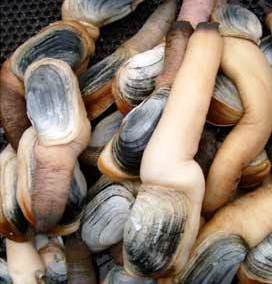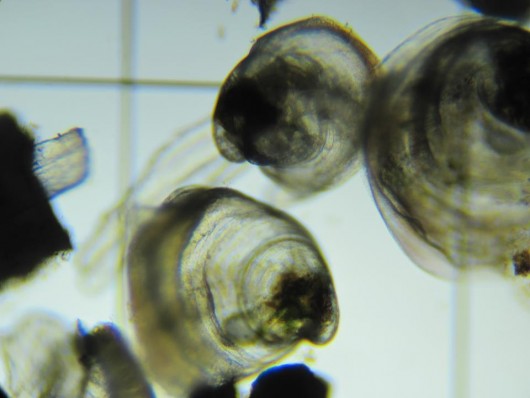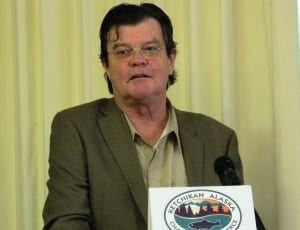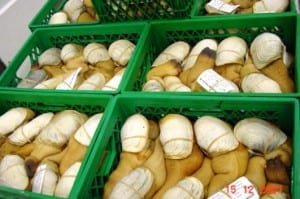Ketchikan-based Oceans Alaska has gone through some transformations over the past few years. It started out as a mariculture research and educational venture, then the nonprofit organization got into the shellfish seed business while still retaining its research focus. Now, though, OceansAlaska is shifting into a fully commercial operation that its new director said should become profitable in the near future.
Hatchery Manager Ron Zebal spoke recently to the Ketchikan Chamber of Commerce about Oceans Alaska’s current activities, and what’s next for the organization.
Southern Southeast Alaska’s water is great for shellfish. Zebal said the water is cold enough that geoducks can be grown year-round. Oysters love it here, too. Not only do oysters have a much lower mortality rate than elsewhere during development, the ones that survive grow big and fat.
“There’s something about the health of Alaskan waters that impressed me the last time I was here,” he said. “And it’s impressing me even more now that I’m producing in it. I really don’t know what it is. I just know that they’re happy.”
Right now, Oceans Alaska’s small staff is focused on oysters. Previously, the organization purchased larvae from other producers, and then raised them into seed for Alaska oyster farmers. Zebal said now, they’re going to produce their own larvae on site.
“The whole Alaskan industry have been dependent on bringing in larvae that are ready to set from Washington and Hawaii,” he said. “We’re the first ones to start breeding Alaskan oysters in Alaska for Alaska.”
Oyster seed is in high demand because ocean acidification is making it more difficult to grow them. Zebal said there’s a70 million seed shortfall among oyster farmers in Canada, for example, so there’s definitely a market for the product, although they’ll sell first to Alaska farmers.
“Right now, we have 1 million 1.5-3 mm oyster seed, which is getting close to sale size. All of it is already sold. Deposits are in from Alaska growers,” he said. “In addition to that, we have 4 million 1 mm oyster seed to back that up. We’re setting 15 million more tomorrow, and 15 million more after that.”
After the oyster-seed season is over, Zebal said they’ll get serious about geoducks.
“We have Alaskan orders for 120,000 for June, and we’ve already received an order for a million seed, which is $250,000, for delivery in October,” he said.
Oceans Alaska had some financial problems in the recent past. They’re now operating with a new board, new direction and a loan from the Ketchikan Gateway Borough.
Zebal said he understands why some members of the public might be skeptical that the organization will succeed, “because of the sort of checkered past that they had. I don’t think it was really their fault. They did waste a lot of money, but anything pioneering you end up wasting a lot of money.”
Zebal said he’s confident, though, that Oceans Alaska will break even in 2016, and then
start turning a profit, because he believes the oyster and geoduck markets will grow.
In fact, he said, it’s growing already. Zebal said that Alaska’s first geoduck farm started in Hobart Bay just last year, and will be a big customer for geoduck seed.
Zebal said Oceans Alaska will branch out a bit from shellfish, in hopes of helping Alaska’s oyster farmers even more.
“This fall, we’ll be distributing to oyster growers basically rolls of string seeded with valuable species of kelp,” he said. “Oyster growers grow oysters on long lines with trays or bags underneath the longlines. So, between those lines, they’re going to string these strings and produce a second crop, which is kelp, which is used for sushi and for medical reasons.”
Once Oceans Alaska is stable and profitable, Zebal said he wants to look into yet another product: sea cucumbers. Like geoducks, they’re popular in the Asian market and he said they shouldn’t be too difficult to rear.
“The guy who is most successful at growing baby sea cucumbers right now feeds them on the waste products of oysters,” he said. “So, oyster poop turns out to be the perfect thing to feed sea cucumbers, so they’ll be at the end of the line.”
With Alaska’s clean water and a global market hungry for product, Zebal said mariculture has huge potential to become a major industry for the region.









